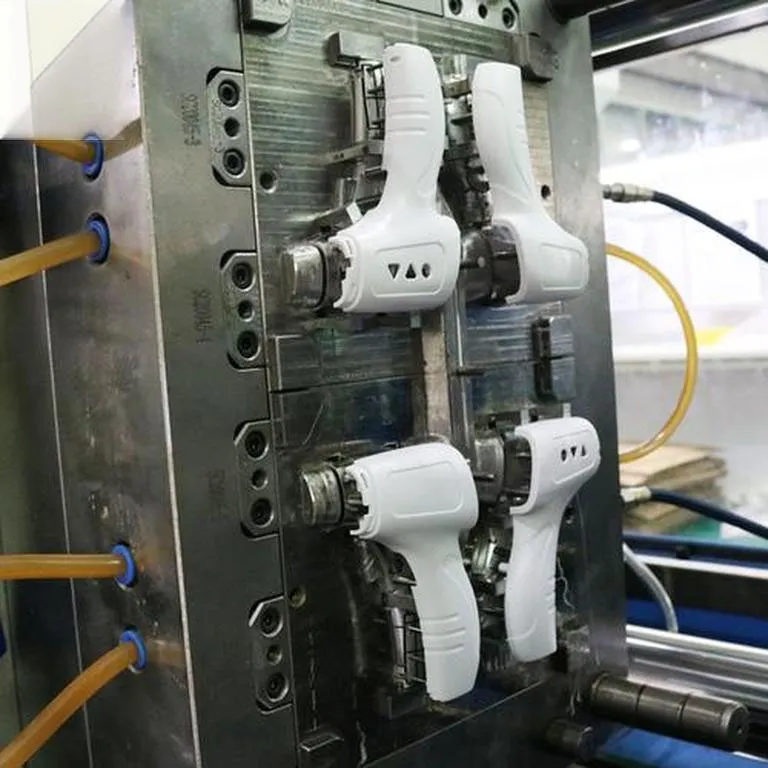Key Design Considerations in Molding Electronic Thermometers for Ergonomics and Consumer Comfort
2024-11-15
When it comes to designing an electronic thermometer, functionality and accuracy are paramount. However, ensuring ergonomic functionality and ease of use for consumers is equally crucial for the success of the product. This is particularly important because thermometers are frequently used by individuals of all ages, including children and elderly people, who may have varying levels of dexterity and strength. The molding process plays a key role in shaping the physical form of the thermometer, ensuring that it’s comfortable to hold, easy to read, and intuitive to use. In this blog, we’ll take a closer look at the important design considerations during the molding process of electronic thermometers, focusing on user-friendly design features.
1. Ergonomic Shape and Size for Comfortable Handling
One of the first considerations when molding an electronic thermometer is its shape and size. The device must fit comfortably in the user’s hand, allowing them to take accurate readings without straining or discomfort. For instance, the thermometer body should have a contoured or curved design to fit naturally into the palm of the hand, minimizing the effort required to hold it steady during use.
For thermometers used by children, a smaller, lighter body is typically preferred, as it’s easier for parents to handle while measuring their child’s temperature. In contrast, thermometers designed for adults may need to feature a slightly larger grip for better control. Molding techniques like injection molding allow manufacturers to create custom shapes that fit the ergonomic needs of different user groups while maintaining durability and accuracy.
2. Soft-Touch Surfaces for a Non-Slip Grip
In addition to the shape, the texture of the thermometer is a critical design consideration. Soft-touch surfaces made from materials like rubberized or silicone coatings are often used during the molding process to provide a non-slip grip. This is especially important when dealing with wet or sweaty hands, as the thermometer needs to stay securely in place while being used.
Thermometers designed for use in medical settings or by families with small children may also include anti-slip ridges or textured grips to ensure safe handling. A textured surface reduces the chances of the thermometer slipping from the user’s hand, which could lead to inaccurate readings or injury, particularly in high-stress situations like taking a child’s temperature.
3. Easy-to-Read Display and Intuitive Interface
During the molding process, consideration must also be given to the placement of the thermometer’s display screen and the design of the user interface. The screen should be large enough to be easily readable, even for people with poor eyesight or in low-light conditions. Typically, LCD screens or LED displays are used for digital thermometers because they provide clear, high-contrast readings.
Additionally, the buttons or switches on the thermometer should be strategically placed to ensure they are easily accessible. For example, the power button and mode buttons should be large and simple to press, and they should not require excessive force or dexterity. The key layout must be intuitive, allowing users to operate the thermometer without the need for a complicated instruction manual.
4. Lightweight Design for Ease of Use
A thermometer that is too heavy can be cumbersome, especially for children, elderly users, or individuals with limited hand strength. During the molding process, lightweight yet durable materials are used to ensure that the thermometer is easy to hold and operate for extended periods. Common materials used in the molding process include ABS plastic and polycarbonate, which offer durability without adding unnecessary weight.
To keep the thermometer lightweight while maintaining structural integrity, manufacturers often focus on the internal components, ensuring that the circuitry and battery are compact and well-integrated into the design. A lightweight thermometer is easier to maneuver, making it particularly beneficial for taking temperature readings in awkward positions, such as under the arm or on a child’s forehead.
5. Temperature Probe Design for Comfort
The part of the thermometer that comes into contact with the user’s body—the temperature probe—needs to be both comfortable and effective at reading accurate temperatures. The probe should be designed to fit snugly but gently into the mouth, under the arm, or against the forehead, without causing discomfort or injury. Molding this component requires careful attention to material selection and smooth surface finishes.
For oral thermometers, a flexible, soft-tip probe made from silicone or rubber may be molded to ensure it is gentle against the gums and teeth. For forehead thermometers, a smooth, contoured tip is molded to ensure it glides easily across the skin without causing discomfort.
6. Child-Specific Features
Electronic thermometers designed for children often feature colorful designs or fun shapes to make the thermometer more appealing and less intimidating. The molding process can integrate playful features like animal shapes or bright colors on the thermometer’s body. These features are designed to engage children during the temperature-taking process, helping to reduce anxiety and encourage cooperation.
In addition, many child-focused thermometers include a quick-read function, allowing parents to take temperature readings in a matter of seconds, reducing the discomfort associated with prolonged measurements. These features are integrated into the design and molding process to ensure a pleasant experience for both parents and children.
The design of an electronic thermometer goes far beyond just accuracy—it is equally important that the device is ergonomic, easy to handle, and user-friendly. During the molding process, key considerations such as the shape and size of the thermometer, the texture of the grip, the placement of the display, and the weight of the device all play a crucial role in ensuring that the thermometer is comfortable and intuitive for consumers. By focusing on these design elements, manufacturers can create thermometers that meet the diverse needs of different user groups, making it easier for everyone to measure body temperature safely and effectively.



